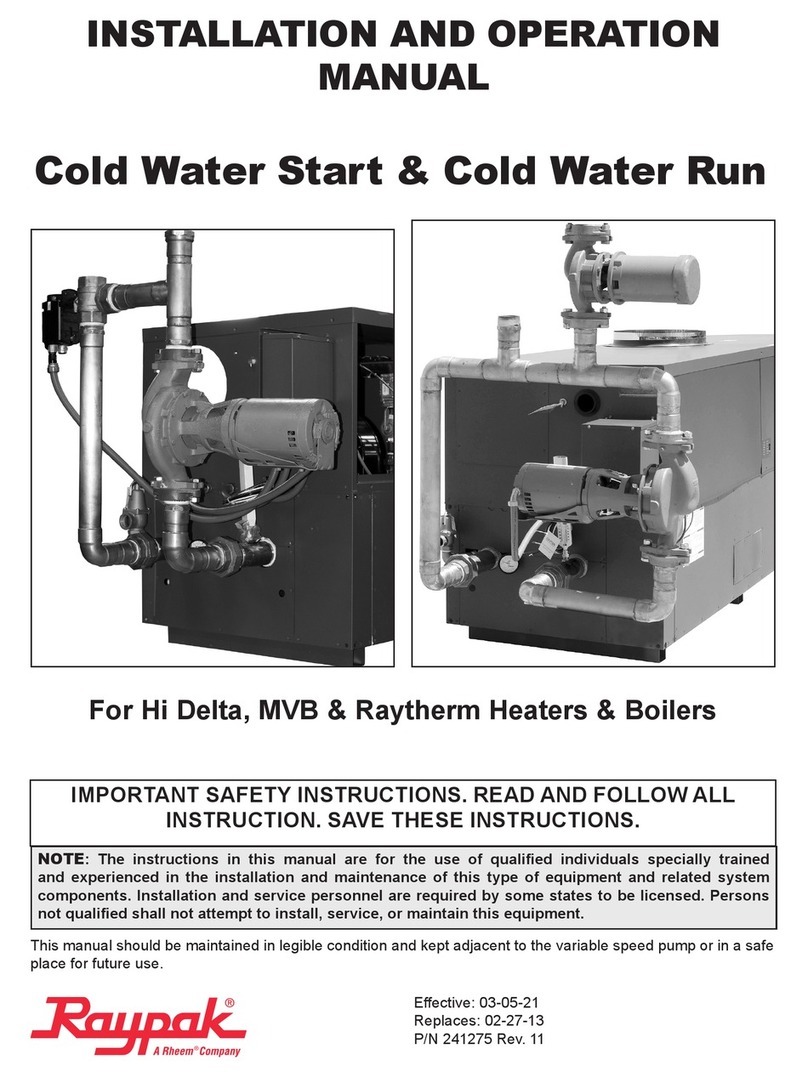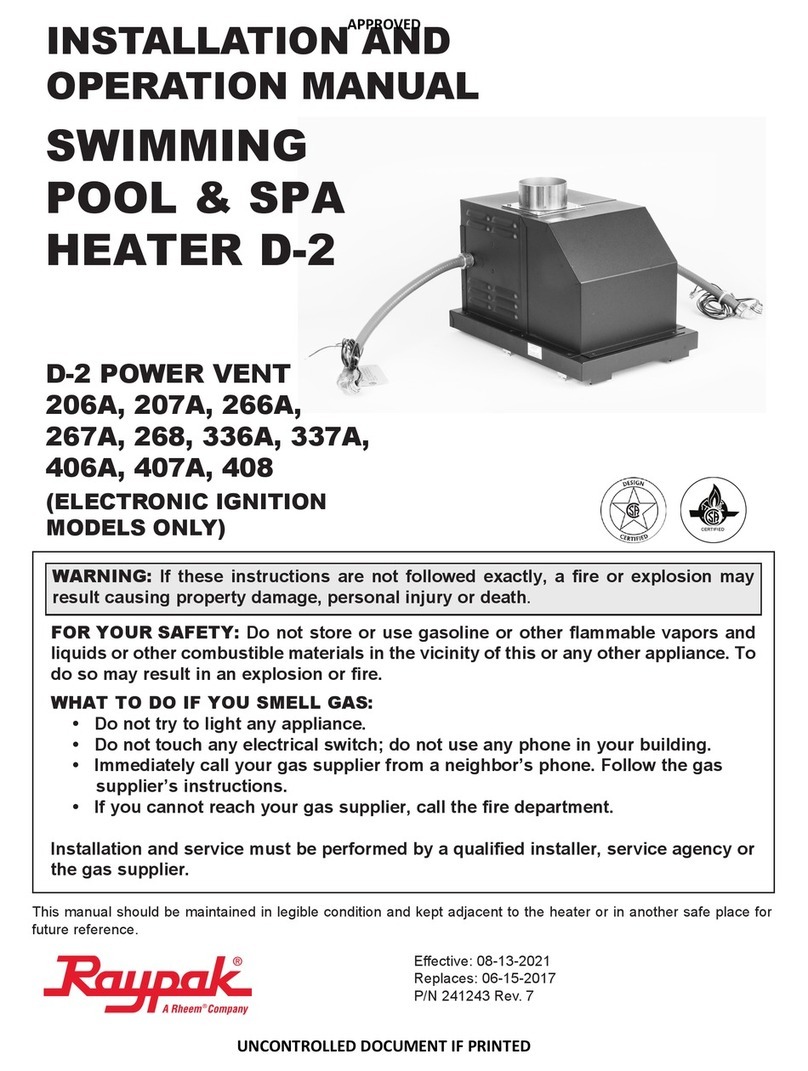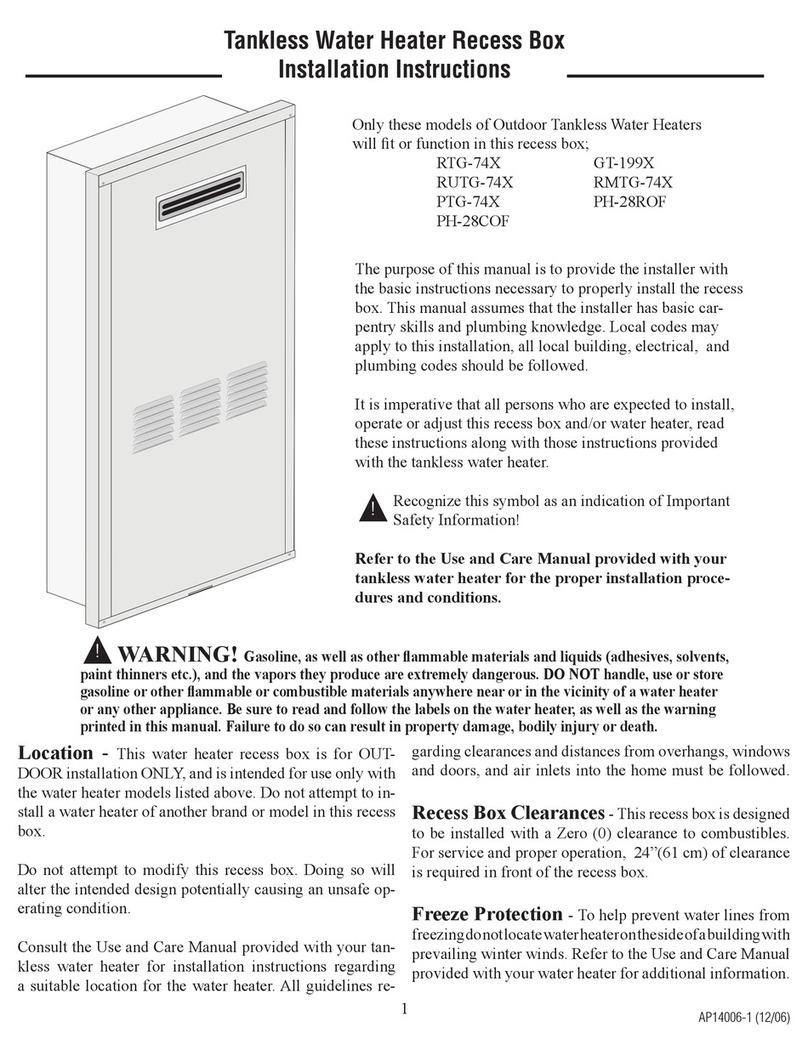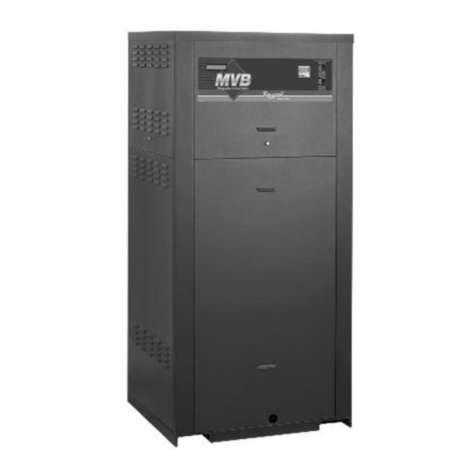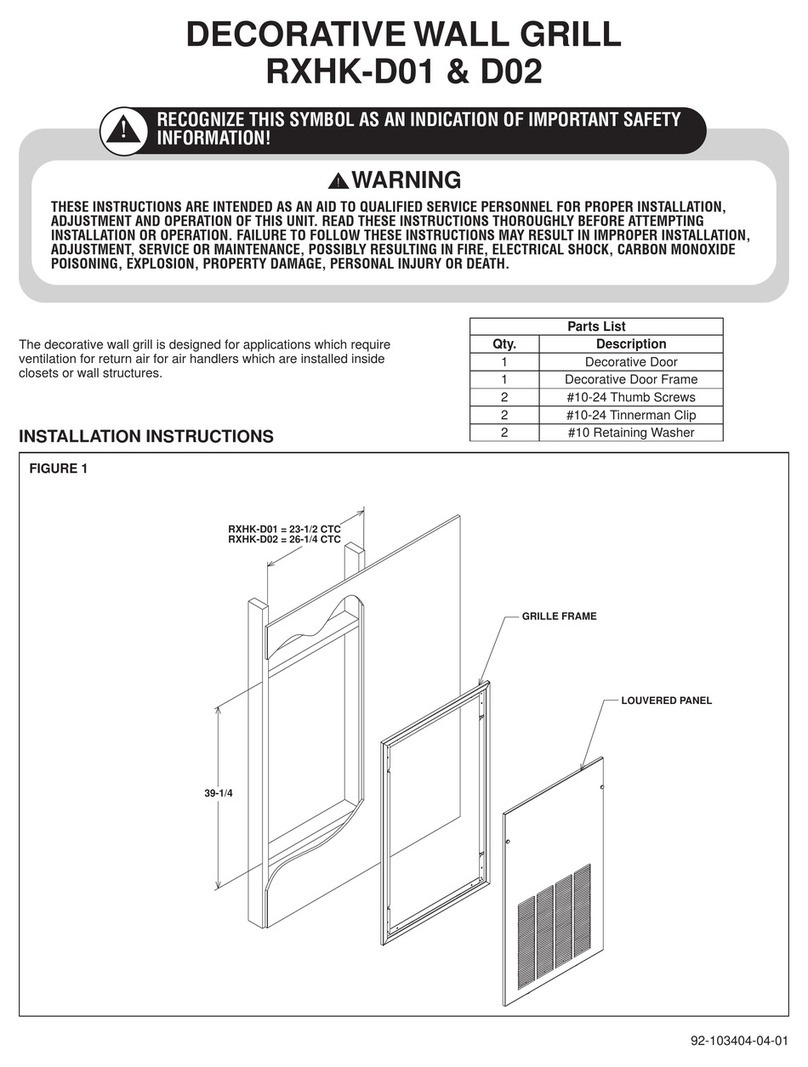
8
At the time of removal of an existing heater, the follow-
ing steps shall be followed with each appliance
remaining connected to the common venting system
placed in operation, while the other appliances remain-
ing connected to the common venting system are not
in operation.
(a) Seal any unused openings in the common venting
system.
(b) Visually inspect the venting system for proper size
and horizontal pitch and determine there is no
blockage or restriction, leakage, corrosion and
other deficiencies which could cause an unsafe
condition.
(c) Insofar as is practical, close all building doors and
windows and all doors between the space in which
the appliances remaining connected to the com-
mon venting system are located and other spaces
of the building. Turn on clothes dryers and any
appliance not connected to the common venting
system. Turn on any exhaust fans, such as range
hoods and bathroom exhausts, so they will oper-
ate at maximum speed. Do not operate a summer
exhaust fan. Close fireplace dampers.
(d) Place in operation the appliance being inspected.
Follow the lighting instructions. Adjust thermostat
so appliance will operate continuously.
(e) Test for spillage at the drafthood relief opening
after 5 minutes of main burner operation. Use the
flame of a match or candle, or smoke from a ciga-
rette, cigar or pipe.
(f) After it has been determined that each appliance
remaining connected to the common venting sys-
tem properly vents when tested as outlined above,
return doors, windows, exhaust fans, fireplace
dampers and any other gas burning appliance to
their previous conditions of use.
(g) Any improper operation of the common venting
system should be corrected so the installation
conforms with the latest edition of the National
Fuel as Code, ANSI Z223.1/NFPA 54. When re-
sizing any portion of the common venting system,
the common venting system should be re-sized to
approach the minimum size as determined using
the appropriate tables in the National Fuel as
Code, ANSI Z223.1/ NFPA 54.
For special venting applications that require reduced
vent sizes and through the wall venting, the optional D
Series Power Vent can be used. Consult the factory or
your local Raypak representative.
Gas Supply Connections
as piping must have a sediment trap ahead of the
heater gas controls, and a manual shut-off valve locat-
ed outside the heater jacket. All gas piping should be
tested after installation in accordance with local codes.
A minimum of 7 in. WC and a maximum of 10.5 in. WC
upstream pressure under load, and no load conditions
must be provided for natural gas or a minimum of 11
in. WC and a maximum of 13 in. WC for propane gas.
Gas Pressure Regulator
The gas pressure regulator is preset and sealed at 4
in. WC for natural gas, and 11 in. WC for propane gas.
Between the gas valve and the burners is a 1/8" pipe
plug. The pressure at this point, taken with a manome-
ter, should be about 3.7 in. WC natural gas and 10.5
in. WC propane gas. If an adjustment is needed,
remove seal and turn adjustment screw clockwise
, to increase pressure or counter-clockwise
, to decrease pressure.
SEDIMENT
TRAP
MANUAL
SHUT-OFF
VALVE
Fig. 5: Gas Piping
CAUTION: The heater and its manual shut-off
valve must be disconnected from the gas supply
during any pressure testing of that system at test
pressures in excess of 1/2 psig (3.45 KPA).
Dissipate test pressure in the gas supply line before
reconnecting the heater and its manual shut-off
valve to gas supply line. FAILURE TO FOLLOW
THIS PROCEDURE MAY DAMA E THE AS
VALVE. OVER PRESSURIZED AS VALVES ARE
NOT COVERED BY WARRANTY. The heater and its
gas connections shall be leak tested before placing
the appliance in operation. Use soapy water for leak
test. DO NOT use open flame.
CAUTION: Do not use Teflon tape on gas line pipe
thread. A pipe compound rated for use with natural
and propane gases is recommended. Apply
sparingly only on male pipe ends, leaving the two
end threads bare.
Get user manuals: See SafeManuals.com


















